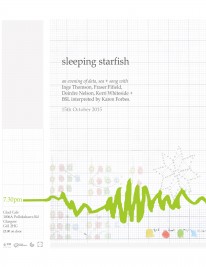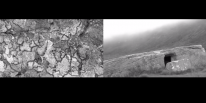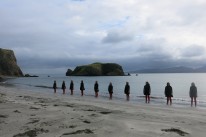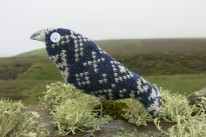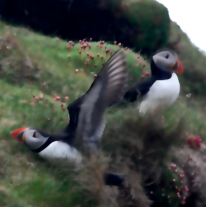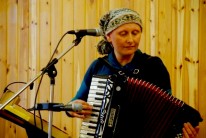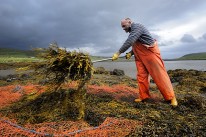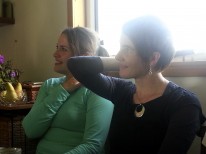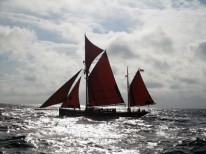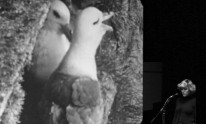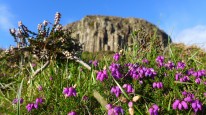Sexy Peat/Tìr mo Rùin
Artist Diary 4 August - Alex Boyd. The Emerging Island
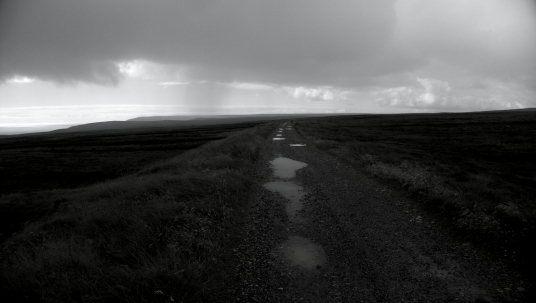
The Peat Road, on the way to the Shieling village of Cuidhsiadar
As the ferry made its slow and stately progress across the expanse of The Minch, and the great peaks of Skye’s mountains gradually settled towards the horizon, I couldn’t help but stand transfixed at the view which stretched before me.
The Outer Hebrides is somewhere which until this week I had never experienced, save through the eyes of photographers such as Werner Kissling, Gus Wylie and Paul Strand. It is a place which had always seemed to me curiously out of time, and somewhere which has been visible from my current home on Skye, but far in the distance, brooding, and somewhat otherworldly.

Approaching the Outer Hebrides for the first time.
That great sense of the unknown is further enhanced by the black clouds and crepuscular rays of light which wandered aimlessly before me, illuminating the Shiant islands to the north which rise from the depths as menacingly as the mythical phantom island of Rocabarraigh, said to appear at the end of days.
Arriving in Harris I experience scenery unlike anything I have seen in Scotland before, recalling the Karst landscapes of the Burren in the West Coast of Ireland. As I drove, the rocky terrain gradually gave way to the wide moorland expanse of Lewis, and it is wasn’t long before I arrived in Stornoway in time to enjoy a glass of wine with the artists Deirdre Nelson and Anne Campbell, who will be my company for the next few days.
I discuss my early impressions of Lewis and Harris, how they are no doubt steeped in Victorian Romanticism, and the many misconceptions which arise from growning up in the Lowlands, far removed from the Gàidhealtachd. I explain that it is my hope that the time spent on Lewis will help bring me closer to understanding the realities of life on the island, and to understand how the islanders view their own landscape, and its role in a wider context.
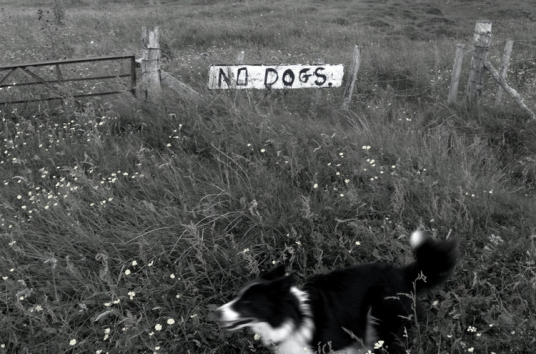
Bran obeying the local signage
My first full day on Lewis begins with an early start. Deirdre and I make our way to meet Anne in the North of the Island, before travelling on to Ness and my first experience of the open Peatland.
We are joined by Anne’s lovable border collie Bran, who runs ahead of us, stopping only to dig in the mud, and bark occasionally at his own reflection. Given the sheer amount of water on the moorland, and the amount of times Bran barks, I wonder if he perceives the moorland as being populated with packs of dogs, while we see only a few lonely figures gathering peat.
The road across the moors bends and winds, with the sky low and dark above us, constantly drizzling without the respite of wind. In these damp and humid conditions I have my first encounter with Lewis’s many insects who curiously fly around us, occasionally biting.

Peat drying by the roadside
Lining the sides of the road we notice the many peat banks which stretch out towards the waters edge, the marks of the shovels still apparent. Above them small stacks of peat await collection, laid out in herringbone patterns, or scattered around the landscape in rows. Further up the track we examine peat cut by machine which instead of having the pleasing briquette form, looks chaotic, cracked and broken into cylinders due to being bored from the land. Anne remarks that such machines should be banned from the moor, we both agree.
As we gain height we see the peat road dropping to reveal a small valley dotted with an eclectic range of buildings, the Shieling village of Cuidhsiadar, our destination.
From a 200 year old collapsed stone shieling we see a selection of much more modern structures such one constructed from tin, to more simple wooden dwellings. On the horizon we see a much older turf covered structure on the moor, but it is the modern shieling in-front of us which draws the most attention.

Part of the shieling village
From beneath wooden panels, the vague form of one of the tour buses which crossed the island can be discerned, now gutted and converted into a home on the moor. Open to the elements, we headed inside it for shelter, and between the upholstery we notice beds, and bags of peat still to be processed.

The shieling bus

Inside the shieling bus
On exiting the bus we have our first encounter with the island’s most unpleasant resident, the Highland midgie. In an instant the landscape around me disappears again, hidden in the swirling mass of insects, as black as the clouds which enveloped the island in the days before.
In a panic we race across the moor, harried by our pursuers until we find shelter inside a sheiling with a partially collapsed wall. Inside we catch our breath, apply netting, masks, and any defense against the midgies we can muster, and decide that for today the moorlands of Lewis were not a suitable place for curious artists.

